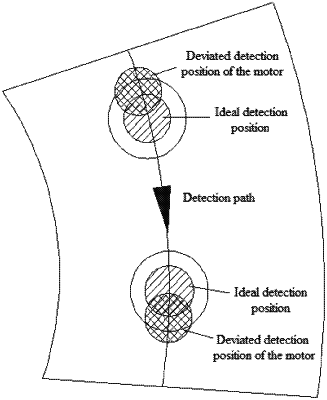| CPC B01L 3/502715 (2013.01) [G01N 15/1484 (2013.01); G01N 2015/1402 (2013.01)] | 15 Claims |

|
1. A method for continuously collecting fluorescence data of a microfluidic chip, comprising:
emitting, by an optical path system, a light perpendicular to the microfluidic chip, wherein centers of all reaction cells forms a same circle, and a center of a light spot formed by the light on the microfluidic chip is always located on the circle formed by the centers of all reaction cells;
rotating the microfluidic chip around a center of the circle formed by the centers of all the reaction cells, and collecting fluorescence signal values along a rotation direction of the microfluidic chip by using the optical path system; and
processing the collected fluorescence signal values to obtain effective fluorescence data of all the reaction cells,
wherein the microfluidic chip is rotated by one revolution to collect fluorescence signal values of all the reaction cells for each time,
wherein the processing the collected fluorescence signal values to obtain effective fluorescence data of all the reaction cells comprises:
step (1), determining a maximum value A among fluorescence signal values of one of the reaction cell;
step (2), calculating B according to B=A*S, where S represents a preset coefficient, and 0<S<1:
step (3), counting the number N of fluorescence signal values greater than B among the fluorescence signal values of the reaction cell;
step (4), determining A as the effective fluorescence data of the reaction cell if N is greater than or equal to P, where P represents a preset threshold,
wherein the steps (1) to (4) are performed for each of the reaction cells to obtain effective fluorescence data of each of the reaction cells.
|